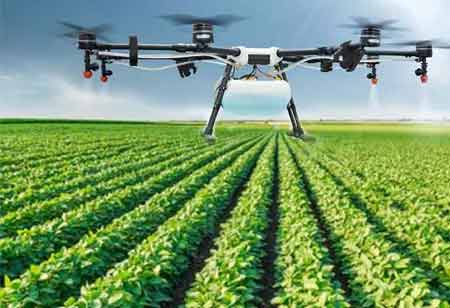Thank you for Subscribing to Agri Business Review Weekly Brief
Agriculture's olden practices are unsustainable in the modern-day, moreover with the advent of global warming and environmental instability.

By
Agri Business Review | Monday, August 02, 2021
Stay ahead of the industry with exclusive feature stories on the top companies, expert insights and the latest news delivered straight to your inbox. Subscribe today.
FREMONT, CA: Yield mapping or yield tracking is an accuracy checking agricultural breakthrough which began in the early 1990s. This agricultural technology targets to deliver as much information as possible about the farm's soil and the eventual produce formed. It can help highlight the changes in soil composition between farm regions, provide information about moisture content, and enable the farmer to resolve various farm-related issues.
Numerous high-value crops, including onions, carrots, tomatoes, and sweet potatoes, require the assistance of intelligent farming technologies to increase productivity. Yield mapping achieved this by utilizing various pieces of technology and data to educate and make aware farmers and assist them in making the best use of their resources.
Technological Advances in Yield Mapping
Yield map technology has advanced rapidly since its inception in the early 1990s. Various improvements in yield maps are worth noting, and this section is devoted to them.
GPS advancements: When yield tracking was launched as a farming technique for the first time, GPS technology was in its infancy. Because of this factor, the first yield mapping product did not even have a GPS component. Today, GPS is a prominent aspect of yield mapping, providing the process with unprecedented accuracy.
Precision Enhancement: Early yield-monitoring systems contained many limitations and difficulties related to erroneous spatial data and field maps. Even two decades ago, the ability to use the data generated was somewhat limited. Today, yield-mapping precision has increased drastically, with most systems at or near 100% preciousness. Computing technology has also helped us comprehend, interpret, and implement the data generated through yield-tracking.
Capabilities for Self-Calibration: As previously mentioned, advances in GPS technology have significantly increased the accuracy of yield mapping systems. In Addition to that, there has been a shift toward using self-calibrating yield monitors. Early, farmers or technicians were required to do regular manual calibrations of numerous components, which increased the system's susceptibility to faults.
Resolving Overlaps: We have to appreciate the numerous developments in GPS and related technology; yield maps and monitors can now accurately show the size and space of each specific farm. This allows the monitor to recognize and detect when it enters previously covered farm areas. Until recently, this invention was unavailable, resulting in many inaccurate readings due to overlapping inaccuracies. This issue has been resolved!





